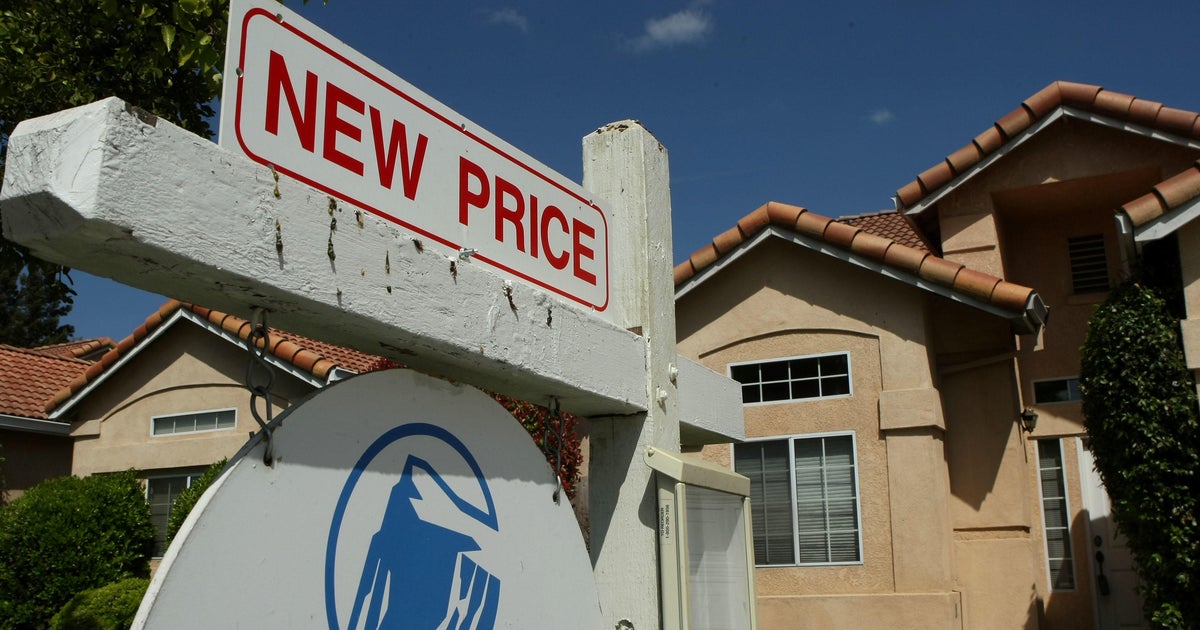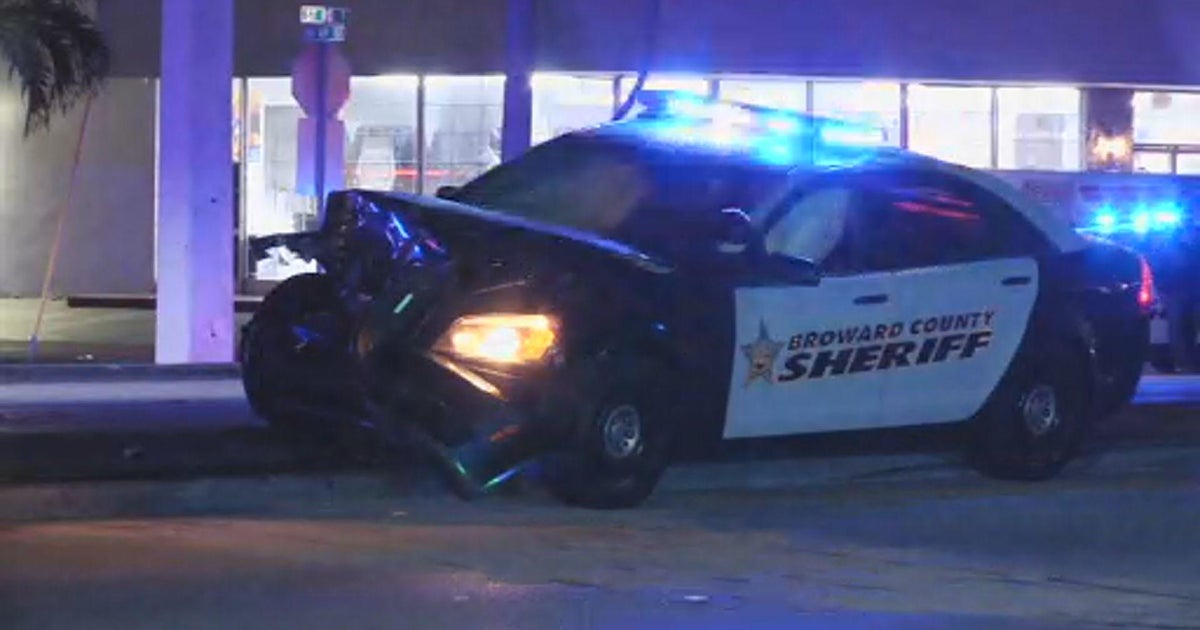Rescuers Pluck Hundreds From Rising Floodwaters In Houston
Follow CBSMIAMI.COM: Facebook | Twitter
HOUSTON (CBSMiami/AP) — Tropical Storm Harvey sent devastating floods pouring into the country's fourth-largest city Sunday as rising water chased thousands of people to rooftops or higher ground and overwhelmed rescuers who could not keep up with the constant calls for help.
The incessant rain covered much of Houston in turbid, gray-green water and turned streets into wide channels navigable only by boat. In a rescue effort that recalled the aftermath of Hurricane Katrina, helicopters landed near flooded freeways, airboats buzzed across inundated neighborhoods and high-wheel vehicles plowed through water-logged intersections. Some people managed with kayaks or canoes or swam.
Volunteers joined emergency teams to pull people from their homes or from the water, which was high enough in some places to gush into second floors. The flooding was so widespread that authorities had trouble pinpointing the worst areas. They urged people to get on top of their homes to avoid becoming trapped in attics and to wave sheets or towels to draw attention to their location.
As the water rose, the National Weather Service offered another ominous forecast: Before the storm that arrived Friday as a Category 4 hurricane is gone, some parts of Houston and its suburbs could receive as much as 50 inches (1.3 meters) of rain. That would be the highest amount ever recorded in Texas.
Some areas have already received about half that amount. Since Thursday, South Houston had received nearly 25 inches (63 centimeters) and the suburbs of Santa Fe and Dayton got 27 inches (69 centimeters).
"The breadth and intensity of this rainfall is beyond anything experienced before," the National Weather Service said in a statement.
Average rainfall totals will end up around 40 inches (1 meter) for Houston, weather service meteorologist Patrick Burke said.
The 18 counties now under a federal disaster declaration represent about a quarter of the Texas population, or 6.8 million people.
The director of the Federal Emergency Management Agency, Brock Long, said the government expected to conduct a "mass care mission" and predicted that the aftermath of the storm would require FEMA's involvement for years.
"This disaster's going to be a landmark event," Long said.
Rescuers had to give top priority to life-and-death situations, leaving many affected families to fend for themselves. The city's main convention center was quickly opened as a shelter.
Gillis Leho arrived there soaking wet. She said she awoke Sunday to find her downstairs flooded. She tried to move some belongings upstairs, then grabbed her grandchildren.
"When they told us the current was getting high, we had to bust a window to get out," Leho said.
Harris County Sheriff Ed Gonzalez used Twitter to field calls for assistance. Among those seeking help was a woman who posted: "I have 2 children with me and the water is swallowing us up."
Some people used inflatable beach toys, rubber rafts and even air mattresses to get through the water to safety. Others waded while carrying trash bags stuffed with their belongings and small animals in picnic coolers.
Houston Mayor Sylvester Turner said authorities had received more than 2,000 calls for help, with more coming in. He urged drivers to stay off flooded roads to avoid adding to the number of those stranded.
"I don't need to tell anyone this is a very, very serious and unprecedented storm," Turner told a news conference. "We have several hundred structural flooding reports. We expect that number to rise pretty dramatically."
The mayor defended his decision not to ask residents to evacuate before the heavy rain from Harvey swamped roads and neighborhoods. He said there was no way to know which areas were most vulnerable.
"If you think the situation right now is bad, and you give an order to evacuate, you are creating a nightmare," he said, citing the risks of sending the city's 2.3 million inhabitants onto the highways at the same time.
Rainfall of more than 4 inches per hour resulted in water levels higher than in any recent floods and higher than during Tropical Storm Allison in June 2001, said Jeff Linder of flood control district in Harris County, which includes Houston.
For those trying to escape, rescue came by land, water and air.
On Interstate 45 south of downtown, television video showed people climbing over concrete dividers to get to a high-wheel dump truck that appeared to be wheels-deep in water on a service road. They clambered up the side of the truck to get into the dump box.
In Friendswood near Houston, authorities asked people with flat-bottomed airboats or fuel for them to help rescue people.
Jesse Gonzalez, and his son, also named Jesse, used their boat to rescue people from a southeast Houston neighborhood. Asked what he had seen, the younger Gonzalez replied: "A lot of people walking and a lot of dogs swimming."
"It's chest- to shoulder-deep out there in certain areas," he told television station KTRK as the pair grabbed a gasoline can to refill their boat.
The Coast Guard, which received more than 300 requests for help, deployed five helicopters and asked for additional aircraft from New Orleans.
Staff at a Houston television station broadcasting live coverage of the floods had to evacuate after water started to gush into the building. The anchors and news operations at KHOU moved first to a second floor before finally abandoning the station.
The White House announced that President Donald Trump would visit Texas on Tuesday. The president Trump met Sunday by teleconference with top administration officials to discuss federal support for response and recovery efforts.
The rescues unfolded a day after the hurricane settled over the Texas coastline. It was blamed for killing at least two people.
One person was killed in Aransas County in a fire at home during the storm, county Judge C.H. "Burt" Mills Jr. said.
Another person — a woman who tried to get out of her vehicle in high water — died in flooding in Harris County, where Houston is located, though authorities had not confirmed a cause of death, said Gary Norman, a spokesman for the Houston emergency operations center.
The fiercest hurricane to hit the U.S. in more than a decade came ashore late Friday about 30 miles (48 kilometers) northeast of Corpus Christi as a mammoth Category 4 storm with 130 mph (209 kph) winds.
Harvey weakened Saturday to a tropical storm. On Sunday, it was virtually stationary about 25 miles (40 kilometers) northwest of Victoria, Texas, with maximum sustained winds of about 40 mph (72.42 kph), the hurricane center said.
The system was the fiercest hurricane to hit the U.S. in 13 years and the strongest to strike Texas since 1961's Hurricane Carla, the most powerful Texas hurricane on record.
(TM and © Copyright 2017 CBS Radio Inc. and its relevant subsidiaries. CBS RADIO and EYE Logo TM and Copyright 2017 CBS Broadcasting Inc. Used under license. All Rights Reserved. This material may not be published, broadcast, rewritten, or redistributed. The Associated Press contributed to this report.)



